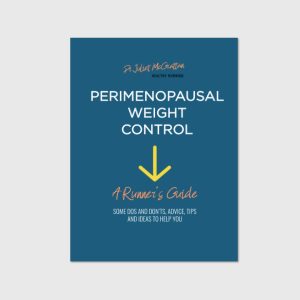When we think of fat we probably think of subcutaneous fat. That’s the squishy fat that sits just underneath our skin. With many people complaining about their ‘bingo wings’ and ‘muffin tops’, subcutaneous fat is often what makes people feel unhappy about their body shape. There is however a different type of fat that we should be far more focused on – visceral fat. Visceral fat is deeper in our body and is stored in and around our major organs such as our heart, liver and intestines. It’s an unhealthy fat and high levels of it mean we have a bigger risk of many serious diseases including type 2 diabetes, heart disease and some types of cancer.
Why is visceral fat harmful?
We now know that most major diseases are caused or worsened by a low level of inflammation in the body. Visceral fat is ‘pro-inflammatory’ which means it causes and adds to inflammation. It releases inflammatory agents and messages into the blood stream and decreases the production of some anti-inflammatory agents too. Having lots of visceral fat therefore means there is more inflammation in the body and a higher risk of many medical conditions including strokes, heart attacks, dementia and depression.
Visceral fat also reduces the body’s sensitivity to insulin. Insulin is made in the pancreas and it regulates blood sugar levels. It determines how much glucose is used and how much is stored. If the body becomes less sensitive to insulin, then blood sugar levels rise and type 2 diabetes can develop.
How do I know how much visceral fat I have?
It isn’t possible to tell how much visceral fat someone has by just looking at them. You can only really do that by having an MRI or a CT scan which shows the amount and location of fat. There are home scales that you can stand on that will measure your body fat but they won’t tell you whether it is visceral or subcutaneous. Some more expensive and advanced ones that measure you externally from different angles may give a more accurate result and some idea about fat distribution, but an MRI scan is the gold standard. Clearly we can’t all have one of these so hopefully technology will continue to advance and give us better and cheaper ways to measure the amount and location of body fat.
If you’re skinny, don’t be lulled into a false sense of security. Even if you don’t have much subcutaneous body fat, you can still have harmful levels of visceral fat. A normal waist size or a normal BMI (body mass index) doesn’t necessarily mean you have low visceral fat levels. Being slim doesn’t always mean you are healthy on the inside. Similarly being fat doesn’t always mean you are unhealthy. We all need to take steps to minimise our visceral fat.
Being slim doesn’t always mean you are healthy on the inside. Similarly being fat doesn’t always mean you are unhealthy.
As a general rule however, the bigger your waist measurement, the larger amount of visceral fat you are likely to have. So, if you are apple-shaped with most of your fat around your middle, then you will probably have more visceral fat than someone who is pear-shaped with most fat around their hips. When women move towards and beyond the menopause, their fat distribution changes and more fat is stored around the middle. The same can be said for men to some extent. This is middle-age spread. More fat being deposited centrally and a resulting larger amount of visceral fat, is one of the reasons our levels of risk for numerous diseases increase as we get older.
Grab a tape measure …
You can measure your waist and get some indication as to whether your size indicates an increased risk of health problems. A waist size of greater than 80cm (31.5 inches) in women and 94cm (37 inches) in men, gives you a high risk of health problems. Greater than 88cm (34.5 inches) in women and 102 cm (40 inches) in men, indicates an even higher risk.
You can also measure your waist to hip ratio to see if your body fat is more centrally stored. Simply divide your waist measurement by your hip measurement. A waist:hip ratio of 0.85 is high for a woman and above 1.0 is high for a man. A woman with a ratio of less than 0.8 and a man with less than 0.95 is considered low risk. (WHO).
Maybe this has got you wondering how much visceral fat is inside you! It certainly got me thinking the first time I heard about it. I always assumed that if my weight was in a healthy range for me that everything must be fine on the inside. Thankfully there are things that we can all do to reduce our visceral fat and that’s coming up in next tomorrow’s quick question. In the meantime, start doing some brisk walking!
Featured Image: Hans Braxmeier from Pixabay.
There are more answers to questions like these and lots of health information to help you lead a happy and active life in my book Sorted: The Active Woman’s Guide to Health. Published by Bloomsbury and awarded First Place in the Popular Medicine category at the British Medical Association Medical Book Awards 2018.

Disclaimer: I can’t give personal medical advice and as always with health advice, reading something online doesn’t replace seeing your doctor who knows your medical history and can assess you in person. So, if you are unsure then always seek the opinion of a health care professional.








2 Comments